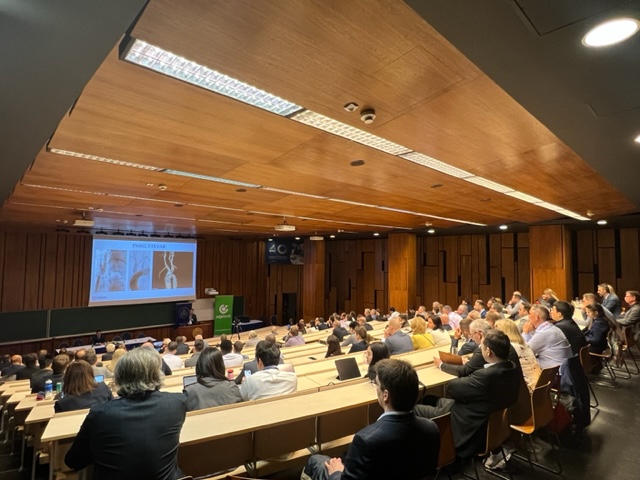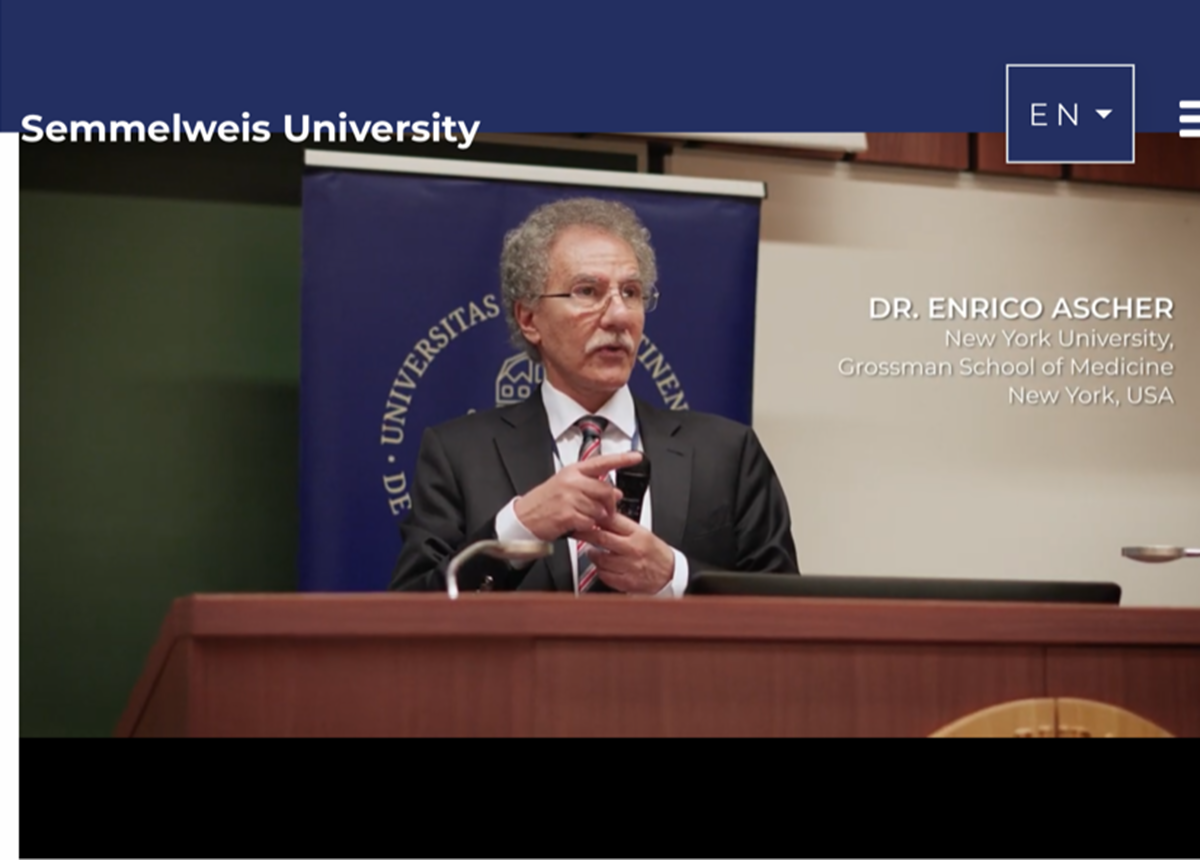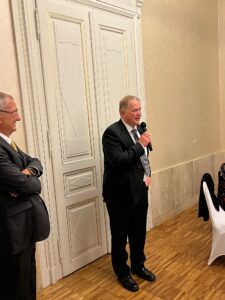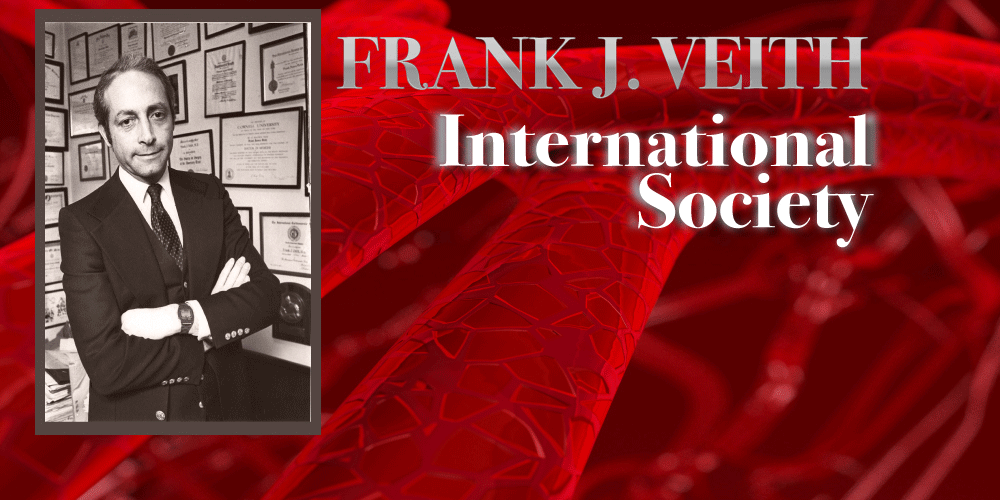The Frank J. Veith International Society In Conjunction With Semmelweis University Created A Successful Vascular Symposium in Budapest, Hungary

For the very first time ever, the FJVIS co-sponsored a large international vascular symposium in Europe under the auspices of the 254-year-old Semmelweis University. Dr. Peter Gloviczki, President of the FJVIS and member of the Board of Trustees of the Semmelweis University was the lead organizer of this greatly successful event that attracted well over 500 participants emanating from 25 countries and 3 continents!

Dr. Peter Gloviczki, President of the FJVIS and member of the Board of Trustees of the Semmelweis University and the Rector of the University, Professor Doctor Bela Merkely
The opening ceremony followed the best European traditions with the Rector of the University, Professor Doctor Bela Merkely, gave the introductory remarks and recognizing the importance of such an event for the University and the vascular community in Hungary. Dr. Enrico Ascher, Co-Chair of the Semmelweis Vascular Symposium also had the opportunity to welcome the attendees and to thank Dr. Gloviczki for his leadership in conceptualization this large international meeting in Central Europe and organizing it with great attention to detail.

Dr. Enrico Ascher, Executive Director, Frank J. Veith International Society
Dr. Ascher also spoke about the reasons why the FJVIS was created and highlighted some of the great achievements of Dr. Veith and how he fought hard and succeeded in modernizing vascular surgery by incorporating endovascular therapies into the armamentarium of the vascular surgeon and guaranteeing the survival of our specialty.
During the 3-day meeting, forty-three internationally recognized vascular surgeons and vascular specialists from all over the world gave excellent talks introducing new concepts and techniques as well as analyzing the results of new landmark prospective randomized studies. In total, there were 158 scientific presentations covering every aspect of vascular surgery and endovascular therapies with a major emphasis on what’s new and clinically applicable in the management of vascular maladies. In addition, interesting vascular translational research presentations were given by a group of highly qualified and experienced scientists. Often, it was difficult to choose between the two large auditoriums running great simultaneous programs.

The Semmelweis International Vascular Symposium offered several educational platforms for the younger generation of vascular surgeons and for those in training to create new scientific work as well as to improve their technical abilities. These turned out to be well-attended, highly competitive, and exciting. Recognition Awards were distributed at the Closing Ceremony for the winners of the various categories.
 Our sincere thanks to Professor Peter Sotonyi, Chief of Vascular Surgery at Semmelweis, and Professor Zoltan Szeberin, both Co-Chairs of the meeting for their hard work and commitment to the success of this meeting. All in all, it was a great meeting that took place in the campus of one of the greatest universities in Europe.
Our sincere thanks to Professor Peter Sotonyi, Chief of Vascular Surgery at Semmelweis, and Professor Zoltan Szeberin, both Co-Chairs of the meeting for their hard work and commitment to the success of this meeting. All in all, it was a great meeting that took place in the campus of one of the greatest universities in Europe.
